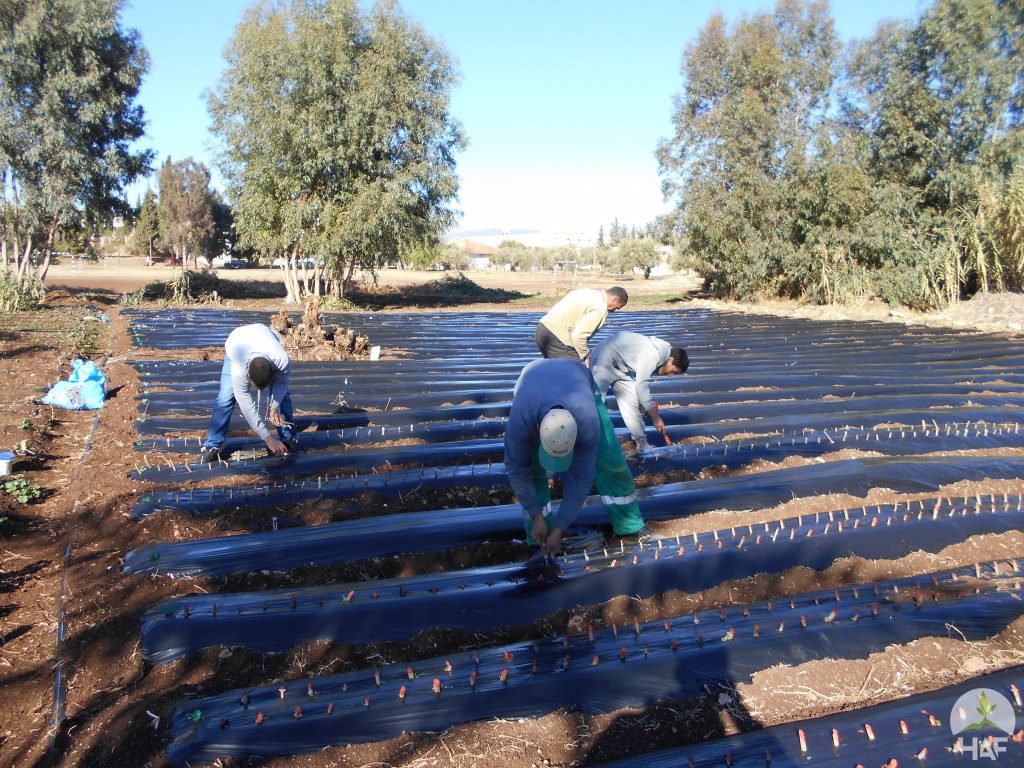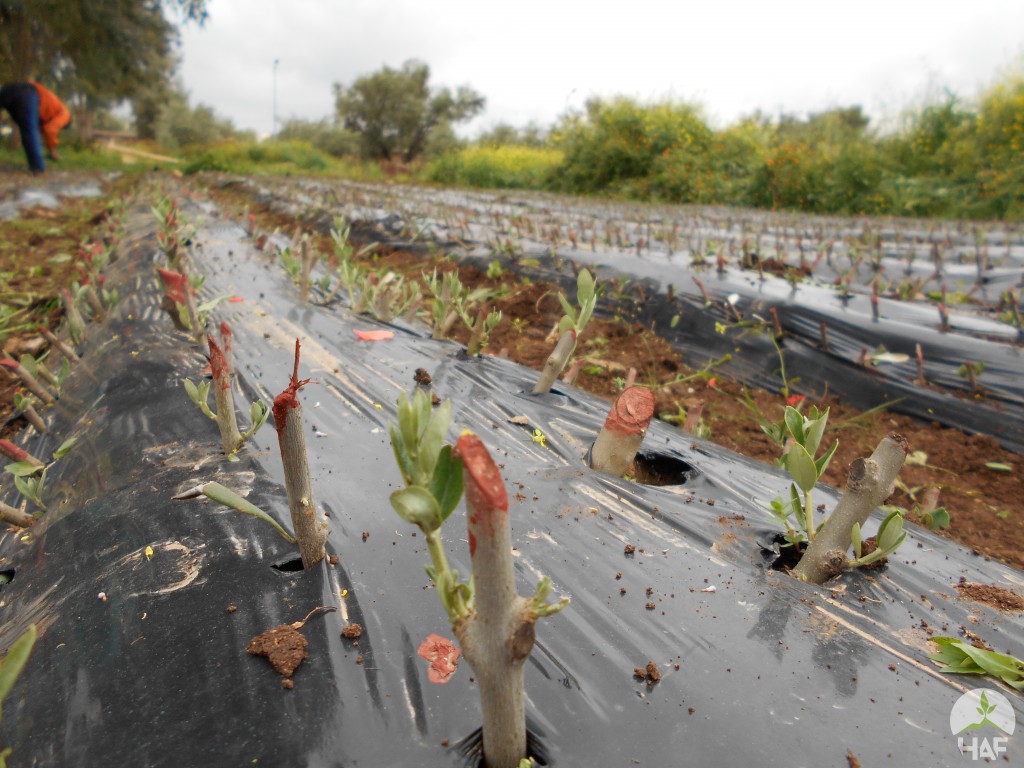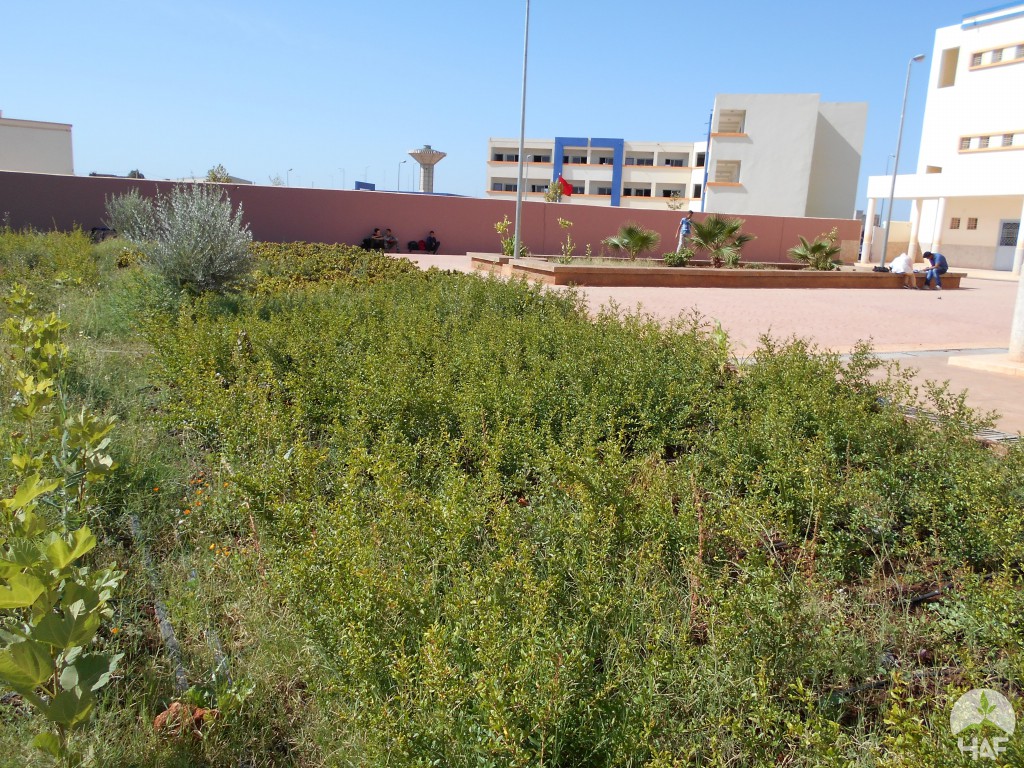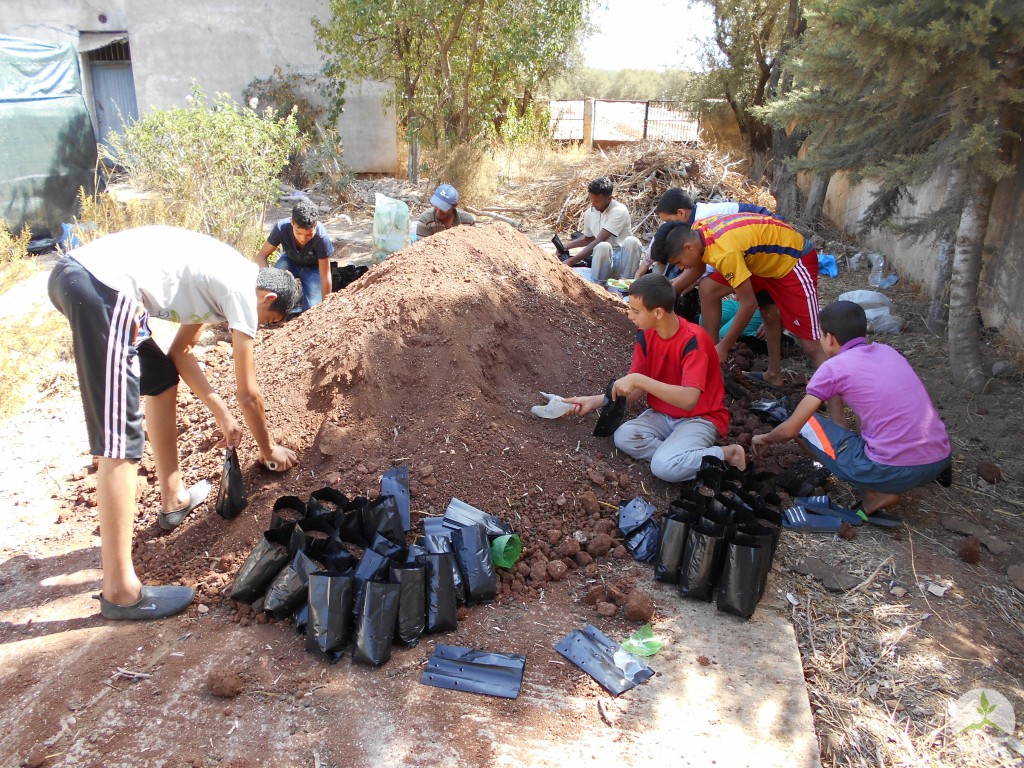Furniture for Learning: Notes from Sidi Abdellah Ghiat Village in Haouze, near Marrakech, Morocco

by J Rojas Meyer
One of the High Atlas Foundation’s general objectives in Morocco is to find novel ways to bridge a critical gap so that farmers and others, can afford to make a vital transition to planting and harvesting fruit trees. Depending of the type of trees and variation in local conditions however, the job HAF does is always more complex. The foundation can also lend substantial amounts of technical and material support when needed to enable tree planting to start with seeds and provides for maintenance throughout maturing process to ensure survival. When creating tree nurseries, partners such as participating schools and youth centers, provide grounds and infrastructure to the nurseries that are crucial in the initial phases when cuttings or seeds turn into saplings that will, with time, be distributed throughout Morocco.
However, when the High Atlas Foundation takes the first steps in engaging small, rural, primary schools in their rapidly expanding program, whether in Al Haouze or the Al-Salaam School in Ifrane, there is another opportunity to consider what kind of impact their participation can have, not just in terms of the foundations strategic agricultural objectives but also, on the quality of a child’s and young students experiences at school.

The primary schools of Ennakouch group and Unite Bouaza, about an hour East of Marrakesh, and Ifrane are perhaps typical of rural Morocco: A walled enclosure, a couple concrete classroom buildings, a sports and recreation area and an outdoor washing up facility. There were a number of preexisting olive trees that it appears had become part of the school plan. However, upon nearing the school building and peering through the open window, I was unexpectedly caught up in a sense of deeply rooted familiarity: the basic furniture of classrooms, made of painted steel and formica surfaces, small upright chairs and individual desks organized in neat rows, black boards and white boards, rectangular posters and charts hanging from the wall, open spiral-bound notebooks and pencils scattered around.
The familiarity of these furnishings, instruments and implements borders on the inane, yet the histories of their use and these ‘basic arrangements’ inevitably come to render and shape a child’s sensual experience of learning. The long years of adapting to and learning to use these material instruments are the back-bone of so many of our skilled learned conventions. The things ‘that makes a school a school’ therefore can be understood to become deeply placed in our habitual memories. And it would also be significant to what degree the continuity of these material environments having become subtly incorporated, then come to frame the kinds of knowledge that so many of us later find comfortable or even accessible.

The idea that to the rather ‘dry’ formalities of this time-honored tradition in elementary and secondary schools, something like a tree nursery would be added is, of course, a deeply intriguing prospect. At the heart of its pedagogical prospects are sensual and object lessons in how to grow and what it takes to nurture along this process and its magnificent unfolding morphology. It is also entirely possible that an innate sense of the possibilities of such arrangements already exists in Morocco, where a sensibility of life in and around gardens and orchards is already by-and-large shared and given extraordinary value.

The agreement recently signed between Ifrane’s Education Delegation (the provincial office of the Ministry of Education and Vocational Training) and the Hight Atlas Foundation is a first step in this promising direction. On a provincial level, public support of this type for farmers is entirely novel and therefore breaking ground in imagining futures in terms of the potential held in these kinds of collaborative structures.
J Rojas Meyer’s work is concerned with material culture and the ethnography of landscapes and place-making. He directs the Omaira Work and Study Group.